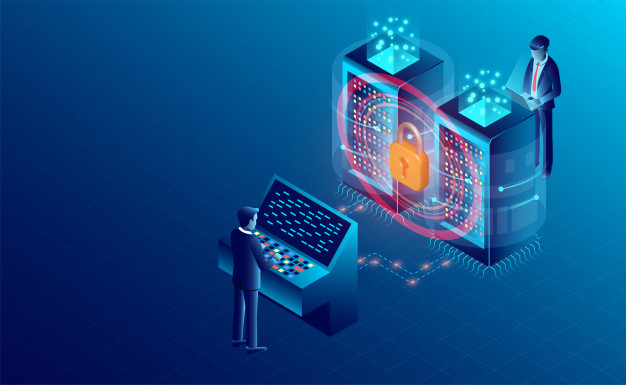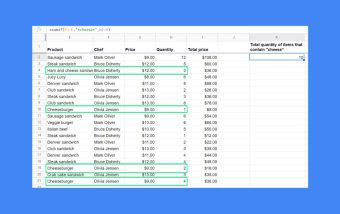Anna’s Archive: How Is It Revolutionizing Shadow E-Library?
Jul 17, 2025

Jul 17, 2025

Jul 15, 2025

Jul 12, 2025

Jul 12, 2025

Jul 12, 2025

Jul 10, 2025

Jul 07, 2025

Jul 07, 2025
Sorry, but nothing matched your search "". Please try again with some different keywords.


Like the other developments in the technological world, cryptocurrencies like Bitcoin heavily rely on some database that can track large volumes of transactions to make them secure. Most of the world’s leading currencies use blockchain technology to achieve the above objective.
In the last year, conversations around Bitcoin, Blockchain, and Wallets have picked up steam. Everyone is looking to make high profits by trading cryptocurrencies. When it comes to these technologies, it is essential that safety is considered of paramount importance. This is why many experts recommend using credible and safe ADA Wallets to store Bitcoin keys.
If you follow technological news, you could have heard so much buzz regarding blockchain. However, when you hear of this terminology for the first time, you may not understand its meaning. In the article, we will help you to understand how blockchain works.
The most important thing is to help you understand more about this modern technology. At the end of this article, you will know that blockchain technology is a simple concept that is not hard to grasp.
The term blockchain refers to an incorruptible economic transaction digital ledger that users can program to record virtually every valuable thing apart from financial transactions.
If you are someone that is new to the entire crypto and blockchain ecosystem, you should consider doing some research before diving in. No matter how much anyone says that understanding this is easy, the truth is that you will need to find a few resources to help you understand the basics of crypto – the extras guide on crypto could be a good place to start when it comes to learning about the various exchange platforms that are out there. Doing a bit of background reading will help you establish a strong knowledge base, develop your awareness and allow you to make better decisions regarding cryptocurrency investments.
Blockchain technology rides in a record of transactions that is shared across a peer-to-peer computer network. All the computers in the network have access to the shared record and use specialized software to take part in this process.
The computers that are in this network verify the transactions that are in the system in data chunks that we refer to as blocks. After the user verifies a transaction in the computer (by solving a complex mathematical equation), the network will add the block at the end of the chain of the other blocks.
The blocks stretch back to the initial transactions in the blockchain system in a chain that has no breaks. Thus, it is one of the best inventions in modern technology when it comes to data processing.
One thing I want you to remember is that you are dealing with a long chain of blocks. The chain grows continuously and you cannot alter it by going through some points in the past.
If any user attempts to go to a certain point in the past to alter any block, it will alter all the blocks from that time. Since a distributed system has several blockchain peers, you will be able to view any alterations in the blocks.
The implication is that it is hard to break or alter a past block. It explains why a blockchain is unchangeable and immutable. This feature is what makes that blockchain technology to be a safe alternative for users.
You could have heard about the term blockchain severally. In most cases, this terminology is used in reference to the various types of blockchain-like cryptocurrency. The initial application of blockchain in the market was in 2009 during the release of Bitcoin.
The term Bitcoin refers to the currency while Blockchain is the technology that is behind its operations. Cryptocurrency is the digital currency that blockchain technology underpins. The group of people or a single individual who invented Bitcoin were referred to as Satoshi Nakamoto.
However, no one is 100 percent sure of the above details. The identity of these inventors is still unknown but the popularity of Bitcoin has continued to increase from its initial release. It was labeled as a peer to peer electronic cash exchange system and it performs
A simple explanation of this concept is that blockchain technology works like a computer system that stores record where all the users can verify and guarantee security. As a result, no single user can edit the system and make alterations because all the people who are using the system watch what takes place.
Blockchain stores data across personal computer networks making them both distributed and decentralized. Therefore, there is no central authority that owns the transaction system and anyone can use it.
The individuals who own this system hold the bundles of records that the other users submit in a chronological chain and they are referred to as blocks. Blockchain technology utilizes cryptography that basically refers to a form of mathematics that is used to solve codes.
It makes sure that no one can alter the codes. Digital coins such as steam, ethereum, and bitcoins use their own blockchain to track their own records over digital cash. As a result, only a single person can own the system at a time and you cannot send cash two times.

Blockchain technology is poises to enhance the security of online transactions. The beauty of this system is that it eliminates the need for middlemen. Because blockchain technology is a decentralized system, no single organization or entity controls it.
Once a user adds a blockchain to the chain, the computers will verify whether the previous transactions actually took place. Now that every block references the block that is before it, it confirms all transactions that take place up to the original block. The blocks of anyone who tries to cheat the system are very different from the other blocks. Because blockchain technology requires consensus from all the users, the system will dispose of any cheating version.

The blockchain technology that is behind Bitcoin currency is basically a public ledger. It covers all the transactions that have taken place. The good thing about blockchain technology is that you cannot interfere with it or change it rendering it a secure method of payment.
Traditionally, we understand that banks manage all currencies. Bitcoin does not have a central authority like traditional currencies. As a result, the system has its advantages and disadvantages. The people who maintain this cryptocurrency are referred to as miners.
The term miners refer to individuals who run their personal computers. The purpose-built computers constantly compete to solve complicated math puzzles to be able to complete a transaction. This may appear to be confusing but there is no cause of alarm. The example below cab give you a better understanding of this concept;
These transactions are taking place globally. The system bulks together all the individual transactions in a block. The block is released to the Bitcoin network that comprises all-purpose build computer systems.
Once the blockchain technology solves a mathematical system, the winner is always rewarded with Bitcoin. After the block goes through validation, it will be added to the previous blocks which in turn creates a chain. This explains the origin of the term blockchain.

The second form of digital currency is what we call ethereum. It is one of the best digital coins that blockchain technology offers. The good thing about ethereum is that it specializes in digital currency.
When you note cryptocurrencies by value, ethereum comes in the second position globally. As of the close of September 2018, the price of ethereum was standing at 2355.39 U.S dollars. Just like is the case with ethereum, Bitcoin is also a public cash system.

Ripple is an excellent alternative for anyone who has an interest in cross-border transactions. It is the main blockchain platform for moving currency between companies. The system overcomes the delays that people face when moving currency from one country to another.
Traditional systems are expensive and need several middlemen to complete the transaction. The cryptocurrency from Ripple is referred to as XRP. Besides, the blockchain technology that is associated with Ripple is referred to as xCurrent.
The main purpose of xCurrent is to cut out middlemen and their parties. It reduces the whole transaction process to a matter of seconds.
With these insights, you now know that Blockchain technology does not only refer to Bitcoin. Several other companies out there are also using Blockchain. Some of them include Hyperledger, IBM, R3, and Ethereum among others.
Several statistics are proven to be true when it comes to Blockchain technology. First, the biggest demographic that use blockchain technology in financial services. The financial and investment services command close to 8.14 percent of the community interests.
Secondly, gender plats a big part with 91.22 percent of Bitcoin users being male. Even though the IT industry has a more balanced gender scale, the number of females who are using Bitcoin is low in comparison to male users.
The third statistics reveal that most of the people who are performing Blockchain transactions are on desktops. Desktop transactions stand at 76% while mobile transactions stand at 20.88%. However, the number of mobile users keeps on increasing over time.
Fourth, the index value of Bitcoin is more than 6000 dollars. To be specific, the index value for September 2018 was $6,604.97. This figure continues to increase over time.
The first digital ledger appeared close to 7000 years ago. Even though the economic exchange way typically human exchange, ledgers appeared for the first time more than 7000 years ago.
More than 100 startup enterprises have been formed to help in developing blockchain solutions. Most of these companies had a partnership with UNICEF to develop the blockchain.
The next statistic reveals that ethereum cryptocurrency is rising. The number of miners on ethereum is 30 times more than the next blockchain community.
Besides, the term cryptocurrency is mentioned after every few seconds. After every three seconds, you will find someone on social media posting something on cryptocurrency especially Bitcoin.
Also, 31 percent of Brits will not buy Bitcoin. Thus, close to 31% of the United Kingdom population believe that Bitcoin has high risks and hence won’t buy it.
The next one states that Bitcoin is the most expensive virtual currency. As of 26th November 2018, the value of Bitcoin was standing at $3,630.58.
Lastly, the largest investors in Bitcoin are Millenials. Most of them are young people who fall in the age gap of 18 to 34 years.
Blockchain technology disrupts the time-consuming and complex process of business-to-business transactions with tamper-proof, verifiable, and transparent alternatives. The system comes with several benefits to the users. Some of them include;
The good thing about blockchain technology is that it automatically triggers events, actions, and payments on the basis of preset conditions. Processes that took several days or weeks can now take place on a real-time basis.
Blockchain is application-based and hence there is no paperwork or physical data. It eliminates that time you would take to store data because the technology does this for you. It also reduces human error significantly rendering the process highly efficient.
Blockchain technology automates the exchange of data and the processes that rely on it. Also, it eliminates batch or offline reconciliation.
The system reduces cost by accelerating the rate of transactions and eliminating the settlement process by using shared, trusted, common information fabric and not relying on complex reconciliation processes or intermediaries.
Blockchain does not rely on intermediaries and hence there are no middlemen to manage the transactions. It eliminates all overhead costs that you would spend on third parties.
You will gain close to real-time visibility in distributed transactions across the authorized business transactions. It will help you in maintaining a shared record system with a single truth version.
Blockchain technology reduces fraud by increasing the level of compliance by the aid of the tamper-proof critical-business records. Use cryptographically linked blocks to secure your data so that the records can’t be deleted or altered without detection.
Blockchain technology cannot become a victim of tempering, corruption, or censorship. It utilizes the peer-to-peer network and hence it stores the ledgers across several locations that are over 35,000 nodes. Thus, unless you track down all the 35,000 nodes, you cannot destroy the system.
All the transactions in the blockchain platform are transparent. The transactions are accessible publicly and everyone can view them.
Blockchain technology is complex but this guide will help you out. It is not one of the industries or languages that you will pick and start running with. However, complexity also turns out to be advantageous in several ways.
During the launch of Bitcoin, Satoshi Nalamoto pointed out a serious security flaw. If over ½ of the computers that are working as nodes lie, the lie will turn into truth. Thus. Community members have to closely monitor the mining pools.
Blockchain technology is among the best inventions in modern society. It comes with several advantages especially when it comes to processing transactions. If you still need advice on this topic, feel free to get to us through info@viacon.in.
Read Also:
Mashum Mollah is the feature writer of SEM and an SEO Analyst at iDream Agency. Over the last 3 years, He has successfully developed and implemented online marketing, SEO, and conversion campaigns for 50+ businesses of all sizes. He is the co-founder of SMM.
View all Posts
Anna’s Archive: How Is It Revolutionizing S...
Jul 17, 2025
How To Optimize Images For SEO? Easy Steps To...
Jul 15, 2025
Quickwin: Your Gateway To Premium Online Ente...
Jul 12, 2025
Top 7 HVAC Marketing Mistakes That Are Tankin...
Jul 12, 2025
8 Top AI Market Research Tools For Fast And A...
Jul 12, 2025

